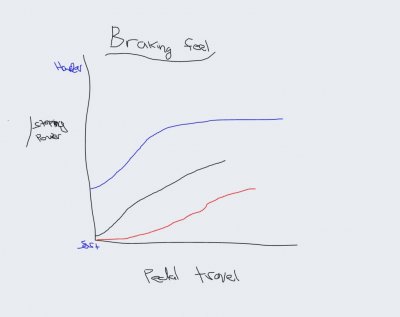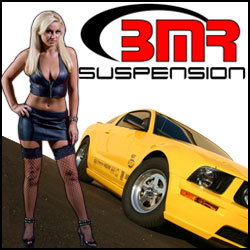CammedS197
forum member
Hey Guys tried searching and didn't seem to find anything.
2006 Mustang GT
So not too long ago I changed my front calipers and rotors out after my car started to get a terrible shudder like some really warped rotors. But now the odd part was sometimes the car would brake as smooth as silk and stop hard and quick just how it should then most of the time it shuddered very badly. When the pedal was firm and responsive with instant response was when it stopped smooth. When it was I guess you could say squishy it would shudder. This is why I thought the calipers were bad. Had over 100k on them.
Now after swapping to the new calipers and rotors actually went to the 13/14 non brembo brakes. It is 95%-99% better and it will pull to the left more then shudder but when braking it will either be even left to right or pulls left with a twitch to the right. Its not very aggressive almost like trammeling but you can tell its not. Now sometimes the pedal will feel soft and not very responsive until a little bit of travel then the braking power is almost linear with the light vibe/shudder literally barely there and it is more of a pull to the left. Then sometimes its super responsive with great feel and firm and stops super quick and hard and silky smooth no pulling left or right.
I have no idea why. Do the rear brakes play in this? I was thinking the brakes may need bled again. I only bled that one time and used only a motive power bleeder never used the pedal actuation method. Is it possible that the brakes needing a bleeding again could do this?
Oh also I forgot, after I installed and drove for two days I noticed a small leak from the driver caliper where the line goes in. Only happened when pedal was pressed. Took wheel off and tightened it and never leaked since. Stupid me just realized that I never bled after. Guessing some air may have gotten in and could cause it?
I'm attaching a rough picture representation of the pedal feel/the stopping power to the pedal travel. Brake lines are less than 2 years old and are boss 302 lines.
Thanks guys,
James

2006 Mustang GT
So not too long ago I changed my front calipers and rotors out after my car started to get a terrible shudder like some really warped rotors. But now the odd part was sometimes the car would brake as smooth as silk and stop hard and quick just how it should then most of the time it shuddered very badly. When the pedal was firm and responsive with instant response was when it stopped smooth. When it was I guess you could say squishy it would shudder. This is why I thought the calipers were bad. Had over 100k on them.
Now after swapping to the new calipers and rotors actually went to the 13/14 non brembo brakes. It is 95%-99% better and it will pull to the left more then shudder but when braking it will either be even left to right or pulls left with a twitch to the right. Its not very aggressive almost like trammeling but you can tell its not. Now sometimes the pedal will feel soft and not very responsive until a little bit of travel then the braking power is almost linear with the light vibe/shudder literally barely there and it is more of a pull to the left. Then sometimes its super responsive with great feel and firm and stops super quick and hard and silky smooth no pulling left or right.
I have no idea why. Do the rear brakes play in this? I was thinking the brakes may need bled again. I only bled that one time and used only a motive power bleeder never used the pedal actuation method. Is it possible that the brakes needing a bleeding again could do this?
Oh also I forgot, after I installed and drove for two days I noticed a small leak from the driver caliper where the line goes in. Only happened when pedal was pressed. Took wheel off and tightened it and never leaked since. Stupid me just realized that I never bled after. Guessing some air may have gotten in and could cause it?
I'm attaching a rough picture representation of the pedal feel/the stopping power to the pedal travel. Brake lines are less than 2 years old and are boss 302 lines.
Thanks guys,
James



